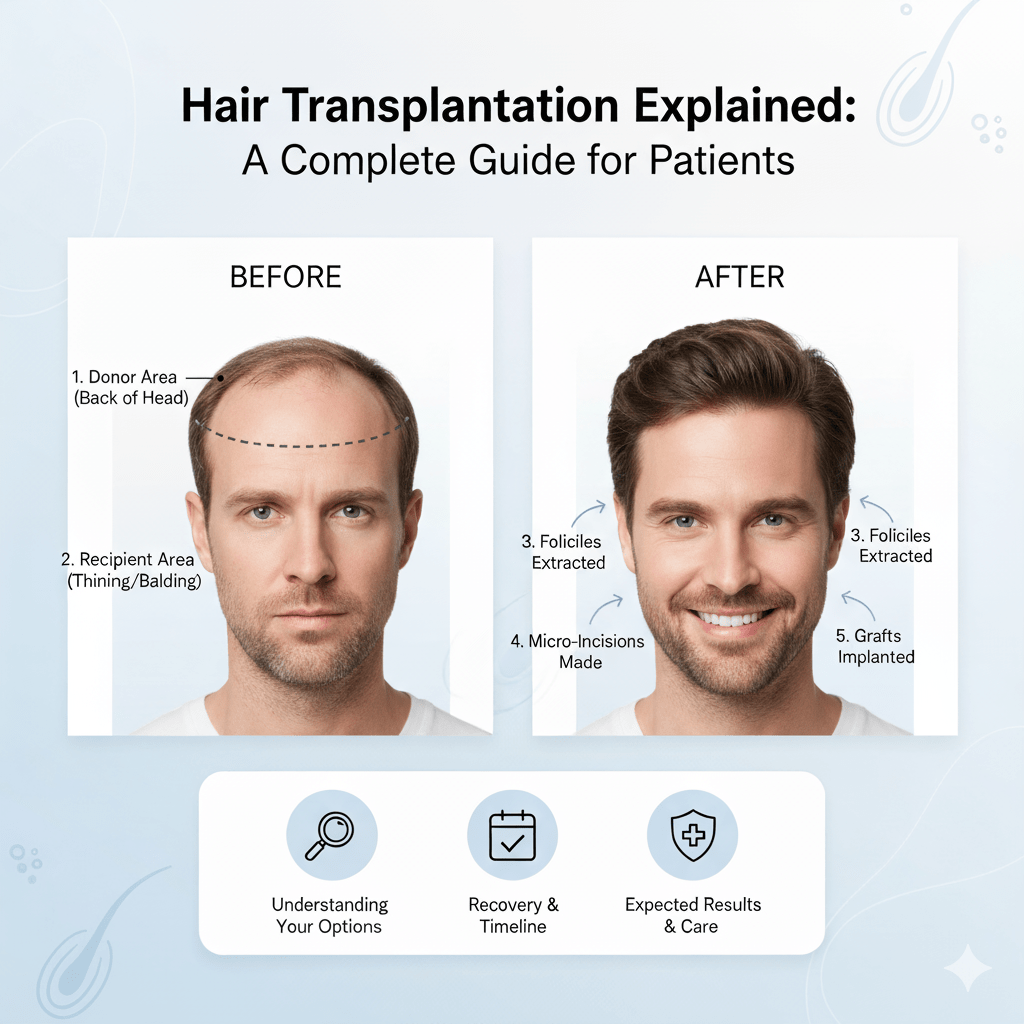Hair loss can affect people of all ages and genders, impacting confidence and appearance. For those noticing thinning or bald patches, modern hair transplant techniques offer a safe and long-lasting solution. This guide covers everything from causes of hair loss to details of transplantation surgery, helping you make a well-informed decision.

Why Does Hair Loss Happen?
Hair loss can be driven by genetics, hormonal changes, stress, nutrition, environmental factors, or underlying illnesses. While losing 25–100 hairs daily is normal, persistent or excessive shedding often signals a deeper issue. Common patterns include receding hairlines and thinning at the crown for men, while women experience overall thinning and decreased density.
What Is Hair Transplantation?
A hair transplant is a medical procedure that moves hair follicles from a donor site to areas with thinning or baldness. The most popular methods include:
- FUE (Follicular Unit Extraction): Minimally invasive and leaves no visible scars.
- FUT (Follicular Unit Transplantation): Uses a strip of scalp to extract follicles, suited for larger coverage.
- DHI (Direct Hair Implantation): Offers precision with natural direction and density.
All procedures use local anesthesia and microneedles, keeping discomfort minimal and recovery quick.
Who Is Eligible?
Ideal candidates are typically:
- Between ages 25 and 60
- Have healthy, dense donor areas
- Free from major health disorders
- Possess realistic goals for outcome
A detailed health evaluation, including tests like blood work, ensures patient suitability and safety.
Step-by-Step: The Hair Transplant Process
The standard procedure follows these essentials:
- Consultation: Personalized planning with your doctor.
- Medical Testing: Basic checks to ensure your health.
- Design and Marking: Mapping the recipient and donor zones.
- Extraction & Transplantation: Grafts are collected and placed via microneedles.
- PRP Therapy: Enhances graft survival and hair growth.
- Follow-up Support: Post-surgery instructions for best recovery.
Aftercare and Recovery
Mild swelling, redness, or itching may occur but resolves quickly with proper care. Most people return to their routine in 3–5 days. New hair begins to grow over 6–12 months, offering full, permanent results.
What Does It Cost?
Hair transplant pricing is typically based on graft count. Each graft contains 2–3 follicles, and Chennai clinics charge between ₹25–₹40 per graft. Transparent billing and free consults help you plan treatments without worry.
Why Clinic Experience Matters
Results depend largely on surgeon skill and clinic precision. Look for certified experts, advanced technology, before-and-after galleries, and clear post-op guidance as you choose a provider.
Non-Surgical Alternatives
Not all thinning requires surgery. Medications like minoxidil and finasteride can help slow loss and promote regrowth for eligible patients, but cannot replicate the permanent transformation of surgical hair restoration.
Frequently Asked Questions
- Hair transplants are usually permanent, using follicles resistant to future baldness.
- Surgery is safe with short downtime; any discomfort is temporary.
- Results naturally blend with existing hair.
- Both male and female pattern baldness can be addressed.
Next Steps for Hair Restoration
Seeking a personalized recommendation is the best first move. For detailed info, procedures, pricing, and booking options, explore our guide on hair transplant in Chandigarh.

